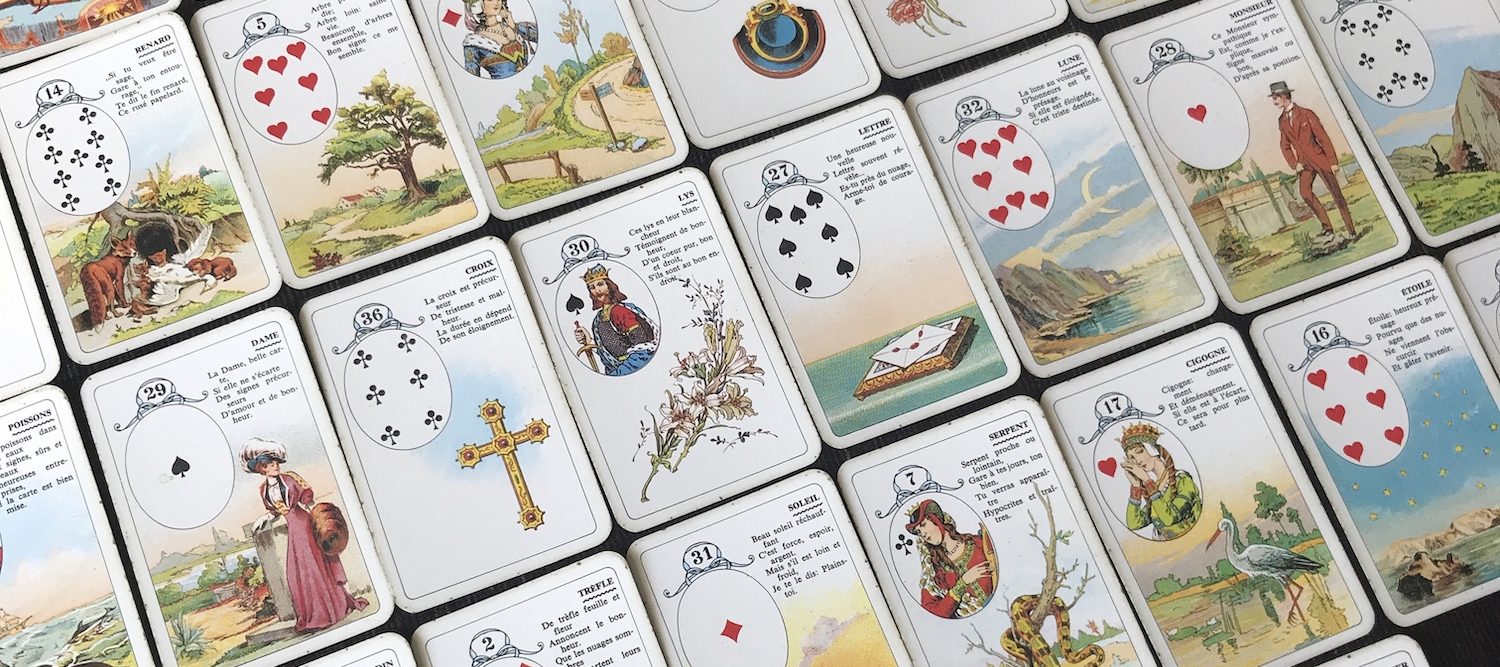Documentation on the Petit Lenormand has been very sparse until a few years ago. For example, the first book in french was written by Mary Marco and published in 1989, while the english speaking public had to wait until 2007 to get something.
For the first 150 years, the only documentation that was found with every deck was a single sheet of paper. It is usually referred as the Philippe Lenormand sheet. For a long time, this instruction booklet, even if tiny, has been the basis of the definitions used with the deck. Most modern interprétations find their origin in that sheet.

Some of the older classic decks, like the brepols / cartamundi pattern, have rhymes or little poems written on the cards. These small bits of information are based on the original instructions.
Just a word of warning before I continue, as I created this blog to express my opinions. I’m showing here the way I use Lenormand and my personal view on distance. If you don’t agree that’s fine, we are all entitled to our own opinion. The subject of distance and proximity has quite divided the Lenormand community for a long time in the english spoken world. The same way some will tell you to read Crowley to be able to understand the Thoth tarot, and others will tell you that you can read it intuitively, the same attitude exists with Lenormand, proponents and detractors of the method of distance.
These instructions introduce the Lenormand deck to the notion of proximity and distance. Or near and far as it is sometimes called. In itself, the principle is easy to understand. To simplify, all definitions relate to the distance of the card from the main significator for the reading. The closer a card is to the card representing the consultant, the bigger its impact. If, for instance, we look at the fish as the card representing money, if the fish is close to the consultant, he/she has easy access to money. If the card is further away, it becomes out of reach and the consultant must make an effort to access it. Simple, easy to understand, and makes perfect sense.
I must say that if we go back to the Philippe Lenormand sheet, most basic definitions make sense to me. Effectively, when we think of the cards in terms of concept or function, we can easily understand where the various definitions come from. These were, in my opinion, well thought out. A perfect set of meanings, not overlapping, and covering all aspects needed to make a good reading.
I really like the concept that if a card is closer to another one, it has a bigger impact on it. I can see that verified in my readings. I always take distance into account, event when doing a grand tableau where I use houses and past, present, future. These, I use for digging deeply into a complex question.
But for a general reading, nothing in my opinion can beat a grand tableau using near and far. Nothing can be as perfect. This way of reading will add so much nuances to every card, it becomes much more precise with the wide range of possibilities. Instead of having a fixed signification, cards interact with each other and when farther away from the consultant, the importance of that cards gradually kind of fades away. It adds another layer to the interpretation.
As it is my usual practice, I asked the cards for advice, “why should I be using near and far in my readings?”

Man, Garden, Child, Tower, Tree.
Interesting to find the Man in 1st positon, as that card represents me. If we look at near and far, the Tree is the farther away. Considering the question, with the Tree that far away, it’s already good to note that using near and far is not unhealthy for me.
The Garden could of course representing me facing my customers. But it can also by definition represent a park of some external space. If we apply this to the question, the Garden could become a nice metaphor for a grand tableau, the space where we distribute our cards.
When we’ve been through these preliminaries, the interpretation becomes easy.
When I do a grand tableau, I can trust a long established tradition, which is deeply rooted.
I will give a series of classes on proximity and distance in September, feel free to contact me if interested.
